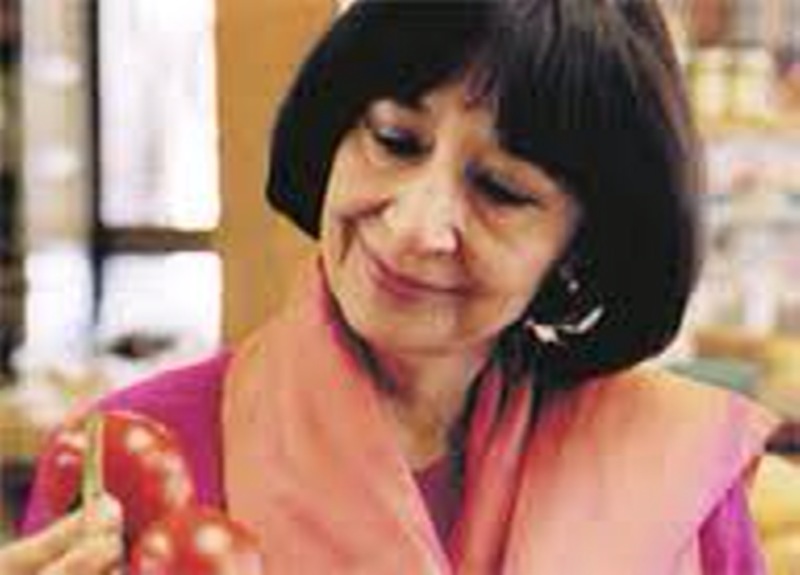Obama Invites German Chancellor Angela Merkel to Step into History at Georgetown’s 1789 Restaurant
 Tuesday, June 7, 2011 at 2:05PM
Tuesday, June 7, 2011 at 2:05PM If one is a world leader, state visits are often a round of the to-be-expected activities ranging from reviewing the troops to sitting through long formal dinners. German Chancellor Angela Merkel was treated to just such a rare break from tradition during her recent visit to Washington DC when prior to protocol's demands President Barack Obama hosted Merkel at Georgetown’s historic 1789 Restaurant.
Named for the year in which both Georgetown University was founded by the Roman Archbishop John Carroll and the District of Columbia was designated as the future capital of the country, each of the six dining rooms in the Federalist period townhouse are discretely decorated with period antiques and equestrian prints.
Yet while Obama and Merkel relaxed and talked for nearly two hours, it was not the historical décor alone that held their attention. Certainly a large part of the evening’s charm was the cuisine created by Executive Chef Daniel Giusti and Pastry Chef Mallory Staley.
Chef Giusti was appointed the lead chef at 1789 in 2008 by the Clyde’s Restaurant Group that owns this esteemed property. Though one of the youngest top chefs in D.C., Giusti has been winning national awards with his fresh seasonal fare highlighting the cuisine of America’s many culinary regions.
His interest in all matters kitchen began t 15 years of age and went on to include training at the C.I.A., an internship with acclaimed Chef Charlie Palmer at New York’s Aureole, study in Italy and work as the Chef de Partie at the popular French Restaurant Guy Savoy in Las Vegas's Caesars Palace. With this background and after serving as executive Sous Chef under former 1789 Restaurant Chef Nathan Beauchamp, he was the perfect choice to lead this very popular restaurant into the twentieth-first century with style and elegance.
 Working beside Chef Giusti is another talented culinary professional, Executive Pastry Chef Mallory Staley. Born in historic Frederick, Maryland, Chef Mallory brings an extensive background to her current position including training at the French Culinary Institute, directing dessert creation at NYC Plaza Hotel’s Oak Room and the Hearth Restaurant.
Working beside Chef Giusti is another talented culinary professional, Executive Pastry Chef Mallory Staley. Born in historic Frederick, Maryland, Chef Mallory brings an extensive background to her current position including training at the French Culinary Institute, directing dessert creation at NYC Plaza Hotel’s Oak Room and the Hearth Restaurant.
Soon additional honors from the James Beard Foundation would also be added to her resume. Charged with recreating the best of America’s traditional desserts with a contemporary twist, her new creations are now gleaming praise from diners as the perfect ending to a more than memorable meal at 1789.
Having enjoyed such a feast, it must have been hard for both Obama and Merkel to leave and return to the formal worlds of duty waiting for them at the White House and Blair House, the official residence of presidential guests.
 But have no fear, beginning Tuesday, June 7th at 9 AM the formal pageantry begins with a 19 gun salute and troop review on the White House lawn. Later that night, the German Chancellor will be hosted at a formal White House State Dinner, complete with placards, toasts and tuxes.
But have no fear, beginning Tuesday, June 7th at 9 AM the formal pageantry begins with a 19 gun salute and troop review on the White House lawn. Later that night, the German Chancellor will be hosted at a formal White House State Dinner, complete with placards, toasts and tuxes.
The dinner there will, of course, be great and grand, but one can only be thankful that for a moment, at least, these two leaders could relax and enjoy all that make the 1789 Restaurant a national treasure not to be missed.
Your Culinary World copyright Ana Kinkaid/Peter Schlagel 2011
 1789 Restaurant,
1789 Restaurant,  Archbishop John Carroll,
Archbishop John Carroll,  Aureole,
Aureole,  Barak Obama,
Barak Obama,  Chef Charlie Palmer,
Chef Charlie Palmer,  Chef Daniel Giusti,
Chef Daniel Giusti,  Clyde's Restaurant Group,
Clyde's Restaurant Group,  Georgetown,
Georgetown,  Georgetown University,
Georgetown University,  German Chancellor Angela Merkel,
German Chancellor Angela Merkel,  Guy Savoy,
Guy Savoy,  Pastry Chef Mallory Staley in
Pastry Chef Mallory Staley in  Architecture,
Architecture,  Awards,
Awards,  Chefs,
Chefs,  Culinary History,
Culinary History,  Design,
Design,  Elegance,
Elegance,  French Cuisine,
French Cuisine,  Hotels,
Hotels,  Presidents,
Presidents,  Restaurants,
Restaurants,  White House
White House 








































































































































































































